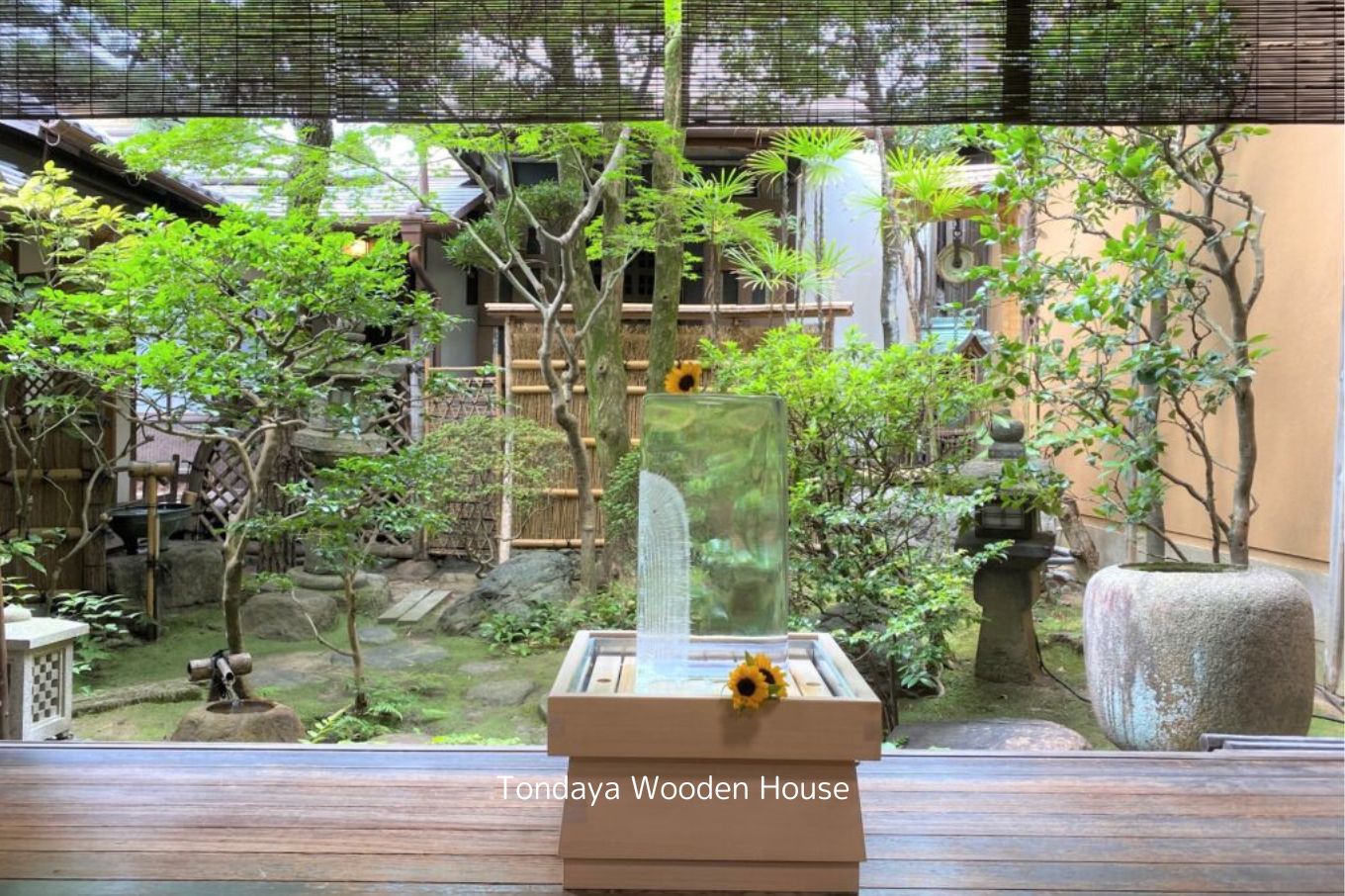TONDAYA WOODEN TOWNHOUSE

Tondaya is a valuable wooden townhouse built more than 130 years ago, which is still in use for living. It is located in Nishijin area, Kyoto`s famous weaving district. Throughout the year, the proprietress continues to protect Japanese traditions and events held throughout the year such as Oshogatsu (New Year ‘s Day), Setsubun (literally “seasonal division”, the day before the beginning of spring in the old calendar in Japan) in February, and Hinamatsuri (Girls`day or Doll`s day) in March and so on till December.
Here you will spend a fun-filled day feeling like a person from Kyoto and the owner will introduce to you various cultural experiences such as ikebana (flower arrangement), tea ceremony, calligraphy, origami, kimono, Japanese-style wedding, private maiko and geisha cultural entertainment and dining (evening only).
Sightseeing spots within walking-distance from Tondaya:
-Seimei Shrine, dedicated to Abe no Seimei, an astrologer who served the emperor and the Fujiwara family as diviner and adviser.
-Raku Museum, which features the essence of the Raku tradition through Raku family’s ceramic collection dating back 450 years ago.
-Nishijin Textile Center, located in Kyoto’s weaving district, Nishijin Textile Center has a museum, a shop selling kimono and other textile goods as well a rental kimono shop for strolling around town.
Sightseeing spots reachable by private car:
-Nijo Castle: feudal castle and former imperial villa. Nijo Castle features a historic and solemn atmosphere, and it is rooted in the Tokugawa Clan, a dinasty that ruled Japan from 1603 to 1867. Moreover, the primary purpose of the Castle was not fortification or defense since it was the home of Tokugawa Ieyasu, one of the most powerful men in Japan.
-Kinkaku-ji: the Temple of the Golden Pavillon. Kinkaku-ji is a Zen Temple and it was the Shogun’s Ashikaga retirement villa. Beautiful in each season, it is literally a “touch of gold” in the surrounding nature. You can enjoy a pleasant stroll while admiring Kinkaku-ji Temple reflected on the surface of its mirror pond.
-Ryoan-ji Temple, which features the harmony of the principles of Zen meditation, offers a quiet and peaceful atmosphere. It was built on the grounds of a villa of the Fujiwara Clan in the Heian Period (794-1185), and then the site was converted into a Zen temple in 1450. No one knows when the rock garden was made, who designed it and what the designer’s intentions were.
